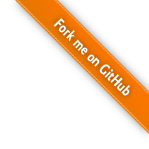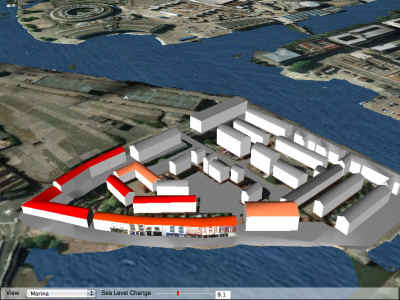
15.10.2010 Uncategorized
Cornelius Malerczyk did the first version of the maya to x3dom tutorial.
This shows the workflow to create a x3dom web-page within a few steps from autodesk maya using the instantreality aopt tool for some data-processing.
12.10.2010 Uncategorized
A new example is online which shows how to use the creaseAngle property to control the online normal creation and update process.
Use this feature careful. This can kill your init, update and render performance!
23.09.2010 Uncategorized
WebGL only supports 65k indices per mesh and therefore large models have to be split. X3DOM splits this now automatically if necessary.
17.08.2010 Uncategorized
We now use Typed Arrays instead of WebGL*Arrays, since all browsers switched to this new interface. Please, as always, update to the latest version of Firefox, Chrome or WebKit to use the currently online dev-build.
Uncategorized
Some people had problems with the existing global key-handler per x3dom window. We fixed this in the current build ( >= 620) and now register EventListener per canvas. You can also switch off the key-mapping altogether with <x3d keysEnabled=’false’ …>. Talking about key-mapping: We do not support the X3D-KeySensor/StringSensor in our profile. Use an extra <div> with addEventListener(‘keypress’) to register a key-handler per x3d-element.
09.08.2010 Uncategorized
We did some cleanups on the server after Siggraph and killed a few examples. Especially the AR-example had an extra debug-window, which prevented the tracker to work.
We fixed the code and links, and thereby everything should work again.
Showcase
Another show-case from Dennis Ippel which is not just nice but also shows a limitation of the current implementation.
If the user does not give any normals the system creates always smooth normals for every vertices. This is (almost) right for the support Level 2 we proposed but this will also irritate people. So we really should increase the support Level to 4 and fully support any creaseAngle value. There is already a ticket for this
05.08.2010 Showcase
Dennis Ippel was also at the WebGL BOF last week in LA and really liked the declarative 3D and HTML integration approach we provided with X3DOM.
He promised to do some expermiments with x3dom and already has a Mutal Twitter Friends show-case on his blog
We love his conclusion so far: “My first impression of X3DOM is that it’s very easy to work with. Specifying the scene through XML nodes is actually very convenient“
Broken Showcase
We meet Francesco Di Cerbo, from the Free University of Bolzano-Bozen, Italy, last week at the Web3D-conference in LA. He presented in his talk a new e-lerning system called DIEL which uses x3dom.
DIEL is an extension to an e-learning platform that provides new paradigms of user interactivity and data representation in a web-based real-time environment. DIEL aims at creating a dynamic and interaction-friendly graphical interface for learning communities.
The system uses a client server architecture, where the client side is based on a HTML5/X3DOM, and the server side is implemented as a standalone PHP application, embedded into the open source course management system Moodle.
Combining X3DOM and AJAX patterns, it is possible to obtain a live graphical representation of a virtual environment, where users can interact with each other or with available resources. A server-push mechanism (using Orbited) has been used to synchronize the different clients. The user can even upload their avatars and other resources as standard X3D datasets.
https://code.inf.unibz.it/projects/diel/
04.08.2010 Uncategorized
X3DOM was presented at the HTML/X3D and Khronos/WebGL BOF during Siggraph 2010 last week. We introduced the framework and general idea using some slides and showed some of the examples. There was a large interest in declarative (X)3D at both meetings and we got very good feedback and had some interesting discussions with potential users of the system.
There where around 120 people at the HTML/X3D BOF and more than 150 at the WebGL BOF. Both meetings where packed and it was really fun to match some faces to email-addresses.
23.07.2010 Uncategorized
The new instantMini version, build on OpenGL ES directly and not WebGL, provides an WebKit layer which supports x3dom content. It was tricky to get everything through the stringByEvaluatingJavaScriptFromString method but finally it works.
The current App does not just support X3D elements in the DOM but also additional elements to configure the vision subsystem (e.g. Marker). This system will also be shown on the Web3D booth (#1024) at siggraph next week
22.07.2010 Uncategorized
Following our own Fallback-model we support now Internet Explore 8 in x3dom. This setup utilizes not WebGL for rendering but needs a installed X3D-SAI plugin.
We use a modified version of the SAI-importDocument-service to import the DOM-data and this is only available in the plugin version of InstantReality right now. You have to install and register the daily-build version.
Not everything works yet and you have to install an extra ActiveX-Plugin. On the other hand you get the high-performance C++-implementation which supports all X3D-profiles and some extra feature: Like Raytracing your data in realtime.
We will demo this version during siggraph next week at the Web3D booth (1024). Come by to see the whole setup running.
Uncategorized
Timo added the new dynamic shader-composer code with example. We now support multiple dynamic lights and everything is (again) lit per fragment.
The new code support all X3D light types (PointLight, SpotLight and DirectionalLight ) and Fog. This also the bases for the CommonSurfaceShader implementation.
20.07.2010 Showcase
Another great “third-party” show-case. This one is from Steve Smith. There are some texture-issues and therefore it only works in Firefox 4.0 beta right now. The scene is Bristol City Harbour although the scenario fictitious. It is being prepared as a proof of principal for using x3dom/web3d to represent thematic data on climate change in cities.

climate-data
The model uses 25cm aerial photography draped on a much thinned LIDAR digital terrain model provided by the British National Rivers Authority (NRA). The overall project is : Suburban Neighbourhood Adaptation for a Changing Climate (SNACC) at the University of the West of England.
Showcase
Nikita Mattar put his facebook FriendGraph3D online.
The interaction is still very limited (there are some basic feature still missing in x3dom ) but this a nice showcase for animation done with the follower node-component.
15.07.2010 Uncategorized
x3dom supports a generic <Texture> node already for months. This node does not reference an external source directly (like ImageTexture and MovieTexture) but uses an HTML5 tag (img, video or canvas) as pixel source:
<Texture> <img src=”…” > </Texture>
<Texture> <video src=”…” > </Texture
<Texture> <canvas width=’256′ height=’256′ > </Texture>
12.07.2010 Uncategorized
Yvonne added most (but not all) chaser and damper from the Follower-component. There is also a simple examples which demonstrates the Position-, Orientation and Color-Chaser functionality. This is, after the Interpolator-component, the second and last animation component form X3D we propose for the HTML-Profile. Every other animation has to be done with javscript or (3D) CSS Animation.
09.07.2010 Uncategorized
We have an official spot at the web3d booth (Hall J, booth 1024) and demo the latest features related to the x3dom.org and instantreality.org frameworks.
Come by to see some interesting demos, talk to the developers and chat about the idea, design and implementation issues you have.
07.07.2010 Uncategorized
Just a really simple example right now but this is really cool. We now support CSS 3D Transforms and CSS animation on X3D-Nodes. This only works in WebKit-based browser (Apple-WebKit and Google-Chrome) right now.
It only works on < Transform >-nodes but you can use all forms to style your actually transformation.
More example coming soon.
28.06.2010 Uncategorized
MeshLab is an excellent tool for manipulating mesh datasets and it is utilized in various application areas (e.g. Cultural heritage pipelines) today. It comes with a great X3D exporter which can handle texture, vertex/face-normal and vertex color. However, the tool creates always a ColorRGBA-node even so there is no alpha-data in the vertex color. Since ColorRGBA is in our proposed profile we added this node to better support MeshLab right now.
The example uses the ColorRGBA values to store the ambient occlusion values per vertex calculated in MeshLab